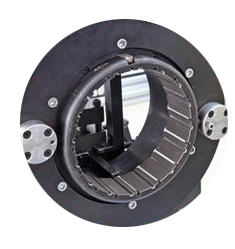Brush motor motor manual stator slot wedge machine employee pre-service training content?
The following is a detailed summary of the brushless motor manual stator groove wedge machine staff pre-employment training content, covering equipment awareness, operating practices, protection and maintenance points to help new employees quickly master the core skills:
First, the basic knowledge of equipment training
1、Equipment structure and function
Core components:
Slotted wedge actuator mechanism (spring / pneumatic drive principle).
Stator fixture positioning system (adjustable chuck and positioning pin).
Sensor module (photoelectric sensor to detect the insertion depth of the wedge).
Transmission system: synchronous belt / gear transmission path illustration, manual crank and mechanical linkage relationship.
2、Demonstration of working principle
Demonstrate the wedge insertion process through physical model or 3D animation:
Steps: stator fixed → manual crank drive push rod → photoelectric sensor detects the position → complete insertion.
Parameter knowledge: great thrust force (e.g. 200N), slot wedge size range (e.g. width 2-8mm).
3、Familiarize with the operation interface
Control panel function:
Emergency stop button, manual / mode switch, pressure adjustment knob.
Interpretation of fault indicators (e.g. flashing red light = abnormal sensor).

Second, the operation of the standardized training
1、Standard Operating Procedure (SOP)
Start-up preparation:
Check air pressure (0.4-0.6MPa) or spring preload.
Verify that the fixture is clamping the stator (manual test pull to confirm that there is no looseness).
Manual operation:
Preload by turning the crank clockwise by half a turn → Observe the pressure gauge (<200N) → Push in the slot wedge at a uniform speed.
Stopping step:
Crank to zero position → turn off the gas source / release the spring → clean the table.
2、Key parameter setting
Pressure calibration:
Use the manometer to adjust the push rod thrust, matching different materials slot wedge (such as mica wedge needs ≤ 150N).
Sensor sensitivity adjustment:
Set the photoelectric sensor trigger threshold through the demonstration mode (to avoid false alarms).
3、Common operation errors and corrections
Error example:
Failure to clamp the stator causes the slot wedge to shift → Consequence: stator slot damage.
Too much pushing force causes the groove wedge to break → Consequence: material wasted.
Correction method:
Check the status of the fixture with each other before operation.
Use the torque limiter or pressure alarm function.
Third, protection training
1、Risk identification and protection
Mechanical risk:
Moving parts (pusher, crank) pinch → Protective measures: prohibit wearing gloves when operating and keep a distance.
Electrical risks:
Control cabinet leakage → Protective measures: prohibit operation with wet hands, regularly check the grounding resistance (<4ω).<>
2. Personal protective equipment (PPE)
Compulsory to wear: cut-resistant gloves (to handle metal groove wedges), goggles (to prevent splashing of debris).
Recommended to wear: noise-proof earplugs (when the noise of equipment operation > 80dB).
3、Emergency handling
Equipment failure shutdown:
Immediately shoot the emergency stop button → report to the team leader → hanging “no operation” sign.
Personnel injuries:
Minor cuts: clean bandage with first aid kit.
Mechanical clip injury: do not force pulling, call for medical support.
Fourth, maintenance training
1, daily maintenance tasks
Cleaning:
Use vacuum cleaner to clean metal debris (after daily work).
Wipe the sensor lens with alcohol cotton (once a week).
Lubrication:
Apply lithium grease to the guide rails (after every 500 operations).
2、Periodic maintenance program
Monthly inspection:
Synchronous belt tension test (deflection ≤5mm).
Spring fatigue test (compression length attenuation >10% will be replaced).
Annual overhaul:
Dismantle the actuator mechanism and replace worn seals/bearings.
※ If you need any help, please contact the technical specialists of Xinhui Mechatronics Equipment Co.







